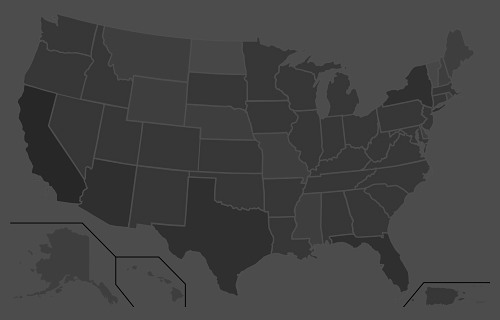“Our added winter moisture and active calling period led to a very long nesting and hatching season, starting in late April and extending into early summer, with chicks hatching as late as early July,” O’Dell said. “From a population standpoint, we are out of a deficit for the first time since 2001-2002. Quail are starting to pop up in places they haven’t been seen in a while.
“If you’ve never had the chance to experience what Arizona quail hunting built its name on, then this would be the year to get out and enjoy it.”
Meanwhile, hunters should note that the season for Mearns’ quail doesn’t begin until Dec. 4. It’s summer rainfall that plays a key role in nesting success and population numbers of this species. After a spotty and relatively weak monsoon across southern Arizona, these birds are likely to be abundant only in pockets that received sufficient precipitation this summer.
A valid Arizona hunting or combination hunt and fish license is required for all hunters 10 and older. Those hunters under 10 must either have a valid hunting or combination hunt and fish license, or be accompanied by an adult who possesses a valid hunting or combination hunt and fish license. Licenses can be purchased online or at license dealers statewide. A youth combination hunt and fish license (ages 10 to 17) is $5.
The general bag limit is 15 quail per day in the aggregate, of which no more than eight may be Mearns’ quail (when the Mearns’ season opens Dec. 4). The general possession limit is 45 quail in the aggregate after opening day, of which no more than 15 Gambel’s, scaled or California quail in the aggregate may be taken in any one day. After the opening of the Mearns’ season, the 45-quail possession limit may include 24 Mearns’ quail, of which no more than eight may be taken in any one day.
More quail-hunting information can be found on the department’s website at https://www.azgfd.com/Hunting/. Another resource for both new and experienced hunters alike is “An Introduction to Hunting Arizona’s Small Game.” Written by Randall D. Babb, the 196-page, full-color book covers where and how to hunt small game birds (like quail), squirrels, rabbits, ducks and geese. It also includes how to prepare and cook your harvest, with illustrations and recipes. The book can be ordered for $16.95 at www.azgfd.gov/publications.
Finally, hunters should check out O’Dell’s techniques for field-dressing quail at https://www.youtube.com/watch?v=3gRwZAcWzzk.
####
Publishers Notes: OUT OF STATE HUNTERS, FISHERMEN & OUTDOOR ENTHUSIASTS; Due to the Covid 19 pandemic, there could be limitations for OUT of STATE hunters, fishermen and other outdoor enthusiasts to include a 14-day quarantine requirement or negative COVID-19 testing alternative. Please check with the State's Department of Natural Resources BEFORE you travel or apply for the 2020 Fall Hunts.
Disclaimer: The views expressed on this site are that of the authors and not necessarily that of TBC Press
West Virginia Anglers Have Favorable Conditions for Targeting Hybrid Striped Bass
Submitted by: TBC Press
Posted on: 05/17/21
The Backcountry Press
The country's premier daily HUNTING, FISHING & OUTDOOR news in the USA and around the globe. Read whats happening in your neck of the woods & beyond.
© 2020 TBC Press - All Rights Reserved Website Design by:
News # 14368
“This time of year, you’ll find hybrids in the Kanawha, Monongahela and Ohio rivers and reservoirs and lakes like Beech Fork, Bluestone, and R.D. Bailey,” said Scott.
Hybrid striped bass are large and aggressive, which makes them popular with anglers. They actively chase gizzard shad throughout the day and can be targeted using lures that might imitate a shad such as white jigs, silver spoons, crankbaits and live minnows. The length record for the hybrid striper is just over 32 inches and the weight record is 16.75 pounds! These fish are extremely hard fighters so anglers should make sure they use proper gear to control their quick runs! If you have questions about where or how to fish for hybrids, please contact your local fishery biologist whose numbers are in the fishing regulations.
To fish for white striped bass, all anglers 15 and older need to buy a West Virginia fishing license. They can be purchased online at WVfish.com. Some rivers and lakes have special regulations for hybrid striped bass, so anglers should also check page 2 of West Virginia’s fishing regulations to see if there are special regulations for the area they’re fishing in.
####
Publishers Notes: Our country is still battling COVID-19. To avoid the spread of this virus and continue to enjoy outdoor activities, ALL outdoor enthusiasts (man, woman, child) should follow the guidelines set by nps.gov. These guidelines include; social distancing, the Leave No Trace principles, including pack-in and pack-out, to keep outdoor spaces safe and healthy.
With temperatures warming up across West Virginia, anglers targeting hybrid striped bass have more than favorable spring weather to look forward to in May - June.
“It’s a great time to catch hybrid striped bass because they’re very active between mid-April and late May when they make false spawning runs up rivers and streams,” said Mark Scott, assistant chief of fish management for the West Virginia Division of Natural Resources. “Anglers can find them congregating at locks and dams and at waterfalls, which makes targeting these aggressive fish a little easier this time of year.”
Hybrid striped bass are a cross between a striped bass and white bass. Despite being sterile, hybrid stripers migrate upstream in the spring in an attempt to spawn. The West Virginia Division of Natural Resources purchases hybrid striper fry each year which are raised to fingerling size at the warmwater hatcheries before being stocked into WV waters.












